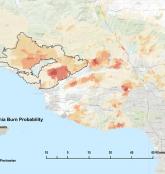The idea of a “super” El Niño has become a hot topic, with many weighing in. What’s drawing all of this attention is the forecast of an unusually warm phase of the El Niño Southern Oscillation (ENSO). Scientists believe that this forecasted El Niño phase could be the strongest since 1997, bringing intense weather this winter and into 2016.
It’s important to remember the disclaimer “could.” With all of the information out there I thought it was a good time to cull through the news and try to separate fact from fiction regarding a “super” El Niño. Here are some of the things that we know—and a few others that don’t pass muster.
Fact:El Niño patterns are strong this year
Forecasts and models show that El Niño is strengthening. Meteorologist Scott Sutherland wrote on The Weather Network that there is a 90 percent chance that El Niño conditions will persist through winter and an over 80 percent chance that it will still be active next April. Forecasts say El Niño will be significant, “with sea surface temperatures likely reaching at least 1.5oC (2.7oF) above normal in the Central Pacific – the same intensity as the 1986/87 El Niño (which, coincidentally also matches the overall pattern of this year’s El Niño development).”
A “strong” El Niño is identified when the Oceanic Niño Index (ONI), an index tracking the average sea surface temperature anomaly in the Niño 3.4 region of the Pacific Ocean over a three-month period, is above 1.5oC. A “super” El Niño, like the one seen in 1997/98, is associated with an ONI above 2.0oC. The ONI for the latest May-June-July period was recorded as 1.0oC, identifying El Niño conditions present as of “moderate” strength with the peak anomaly model forecast consensus around 2.0oC.
Fiction: A “super” El Niño is a cure-all for drought plaguing Western states
Not necessarily. The conventional wisdom is that a “super” El Niño means more rain for drought-ravaged California, and a potential end to water woes that have hurt the state’s economy and even made some consider relocation. But, we don’t know exactly how this El Niño will play out this winter.
Will it be the strongest on record? Will it be a drought buster?
Some reports suggest that a large pool of warm water on the northeast Pacific Ocean and a persistent high-pressure ridge over the West Coast of the U.S., driven by dry, hot conditions, could hamper drought-busting rain.
The Washington Post has a good story detailing why significant rain from a “super” El Niño might not pan out for the Golden State.
And if the rain does come, could it have devastating negative impacts? RMS’ own Matthew Nielsen recently wrote an article in Risk and Insurance regarding the potential flood and mudslide consequences of heavy rains during an El Niño.
Another important consideration is El Niño’s impact on the Sierra snow pack, a vital source for California’s water reserves. Significant uncertainty exists around when and where snow would fall, or even if the warm temperatures associated with El Niño would allow for measureable snow pack accumulation. Without the snow pack, the rainwater falling during an El Niño would only be a short-term fix for a long-term problem.
Fact: It’s too early to predict doomsday weather
There are a vast number of variables needed to produce intense rain, storms, flooding, and other severe weather patterns. El Niño is just one piece of the puzzle. As writer John Erdman notes on Weather.com, “El Niño is not the sole driver of the atmosphere at any time. Day-to-day variability in the weather pattern, including blocking patterns, forcing from climate change and other factors all work together with El Niño to determine the overall weather experienced over the timeframe of a few months.”
Fiction: A “super” El Niño will cause a mini ice age
This theory has appeared around the Internet, on blogs and peppered in social media. While Nature.com reported some similarities between ice age and El Niño weather patterns to an ice age more than a decade ago you can’t assume we’re closing in on another big chill. The El Niño cycle repeats every three to 10 years; shifts to an ice age occur over millennia.
What other Super El Niño predictions have you heard this year? Share and discuss in the comments section.





